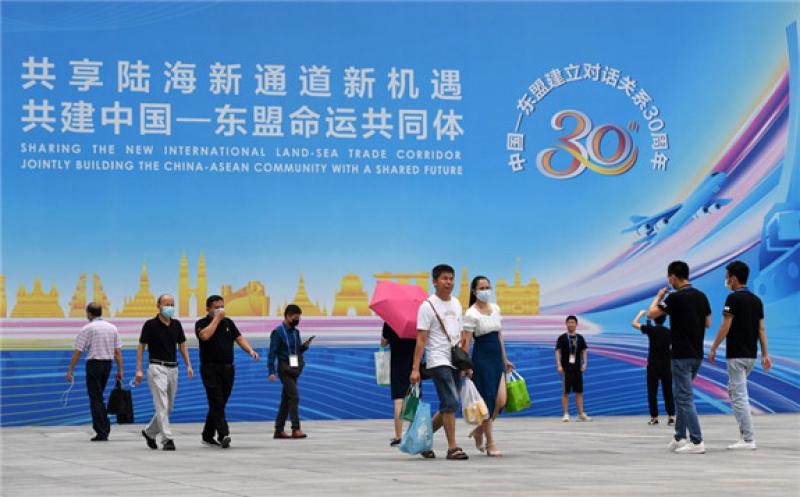Counting their harvest from the Singles' Day online shopping festival, Thai livestreamer Namfon Lapjulpon and her Chinese husband could not help humming songs. "We've earned much more this year," said Namfon with a joyous grin.

The couple began engaging in live commerce, a trendy pattern converging livestreaming and e-commerce to drive sales, in June this year at their store selling snacks from China and Thailand on the Southeast Asian e-commerce giant Lazada.
"Soy milk and instant noodles from Thailand are very popular among Chinese netizens, while Thai customers favor Chinese Luosifen, clothes and fermented rice porridge," said Namfon.
Lazada enjoyed a bumper harvest on this year's Singles' Day, a Chinese shopping spree. About 800,000 brands and stores participated in this year's event on Lazada, with the transaction volume double that of 2020.
The striking sales on Lazada are boosted by mushrooming bilateral economic exchanges between China and the Association of Southeast Asian Nations (ASEAN).
Customs data shows that from January to October, trade between China and ASEAN reached 4.55 trillion yuan (about 711.5 billion U.S. dollars), up 20.4 percent year on year despite the impact of the pandemic. The Belt and Road Initiative (BRI), experts believe, has contributed greatly to sustainable growth.
The China-proposed BRI has grown into the world's largest international cooperation platform, with 141 countries and 32 international organizations having signed relevant cooperation documents with China, including all ASEAN countries.
Bai Ming, a researcher with the Chinese Academy of International Trade and Economic Cooperation under the Ministry of Commerce, said that economic and trade cooperation is a highlight of China-ASEAN cooperation under the BRI.
"Data shows that countries and regions along the Belt and Road are sharing the dividends brought by China's development. At the same time, by optimizing the value chain, industrial chain and supply chain, the cooperation among enterprises is closer, which can help them open up the international market," Bai added.
China is also putting emphasis on making the BRI greener to promote sustainable development.
The Malaysia-China Kuantan Industrial Park in Pahang, Malaysia, is a major project under the BRI. At the plant area of Alliance Steel (M) Sdn. Bhd. in the park, thick smoke is nowhere to be found and the whole area is dotted with green vegetation.
The annual output of the environmentally friendly steel project, which has been in operation since 2018, exceeds 3 million tonnes, and the product quality and production technology are at the leading level in Southeast Asia, according to Hu Jiulin, chief engineer of the project.
"Environmental protection-related investment accounts for nearly 20 percent of the total project investment. This is much higher than the local average standard," he said.
The industrial park has recently welcomed a new circular economy project with an investment of 17.5 billion yuan from Chinese enterprises. The project will not only create 5,000 jobs but also bring advanced environmental protection technologies and concepts to help promote local green and low-carbon development, according to Edward Chong Sin Kiat with the park.
"China encourages countries along the Belt and Road to explore green, low-carbon, circular and sustainable development paths to achieve win-win economic development and environmental protection," noted Zhong Feiteng, an international relations expert with the Chinese Academy of Social Sciences.
The BRI will further inject new momentum in economic development to countries and regions along the routes. According to the World Bank, the initiative could boost trade by 2.8 to 9.7 percent for the corridor economies, and by 1.7 to 6.2 percent for the world, and the global real income could increase by 0.7 to 2.9 percent.
The BRI, featuring the principle of extensive consultation, shared benefits and joint contribution, demonstrates China's responsibility and vision as a major country in the world, according to Zhai Kun, professor of international studies at Peking University.
As this year marks the 30th anniversary of the establishment of dialogue relations between China and ASEAN, Zhai added that standing at the new historical starting point, China and ASEAN will open a new chapter in bilateral relations and build a higher level of strategic partnership.